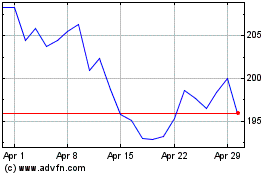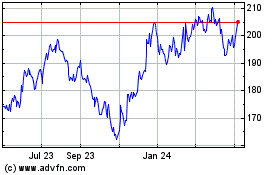Industry Breadth: Can you have too many strong groups? - Real Time Insight
March 17 2014 - 3:50PM
Zacks
One characteristic of this bull market that keeps
many astute investors aboard is the total market breadth. You can
measure breadth in many ways such as net new highs and cumulative
advance/decline stats on the NYSE.
Seeing lots of new highs, and more advances than declines over
time, on the NYSE is a "bigger" deal than just watching the S&P
500 since the NYSE data could be measuring over 2,000 stocks.
A very simple way to gauge general market breadth is simply by
comparing the performance of the growth-sensitive Russell 2000 or
Midcap 400 to the big-cap S&P. These were my tell in early 2013
that the bull was going to be strong as "the other 2,400 stocks"
were leading and signaling good things about the economy and
earnings going forward.
The idea is to see what's going on under the hood besides the
largest 100 stocks by market cap, to make sure they are not moving
things around by themselves. Hopefully, you can also just look in
your portfolio of diverse stocks and see the breadth displayed with
sizable gains from many different sectors, industries, and market
caps.
Another way to measure breadth is to keep track of how many
different industry groups are leading the advance and making new
highs. Below is a great chart from a quantitative stock market
observer with a bearish bent, Mark Lundeen.
Lundeen points out a few things, but his bottom line is that easy
Fed monetary policy is once-again fueling another bubble and it's
showing up in this particular measure of market breadth.

The Dow Jones Total Market Groups (DJTMG) is comprised of nearly
100 industries, but Lundeen generally focuses on just 74. The chart
examines how many of these groups are within 20% of their all-time
highs.
The author also has a little fun recalling Greenspan's infamous
"irrational exuberance" speech. I remember exactly where I was that
day in December 1995. It was the most volatile day I had ever seen
in markets as I stood near the S&P 500 futures pit at the CME
(I wasn't there in 1987).
Or maybe it was #2 behind the March 1996 non-farm payrolls number
coming in at 700,000 when the consensus expectation was for 300k.
Interest rate futures went into a tailspin.
Anyway, the chart above looks like it has more room to run if the
past is any guide to tops. Of course, many industry groups are
going to be making new highs when indexes are at all time
highs.
And if anything, there will be lots of rotation from some groups to
others at new highs as investors take profits in leaders and
possibly move to laggards seeking relative value opportunities.
After all, the market does not move on fundamentals alone and
groups will move on speculation as well.
What leading industry groups are you focused on (or what groups are
your favorite stocks in)?
What groups are you thinking of rotating into? (Here's the Zacks
Industry Rank page if you need ideas)
Does "too many" industry groups making new highs concern you about
a market top?
ISHARS-R 2000 (IWM): ETF Research Reports
NASDAQ-100 SHRS (QQQ): ETF Research Reports
SPDR-SP 500 TR (SPY): ETF Research Reports
To read this article on Zacks.com click here.
Zacks Investment Research
iShares Russell 2000 (AMEX:IWM)
Historical Stock Chart
From Dec 2024 to Jan 2025

iShares Russell 2000 (AMEX:IWM)
Historical Stock Chart
From Jan 2024 to Jan 2025
